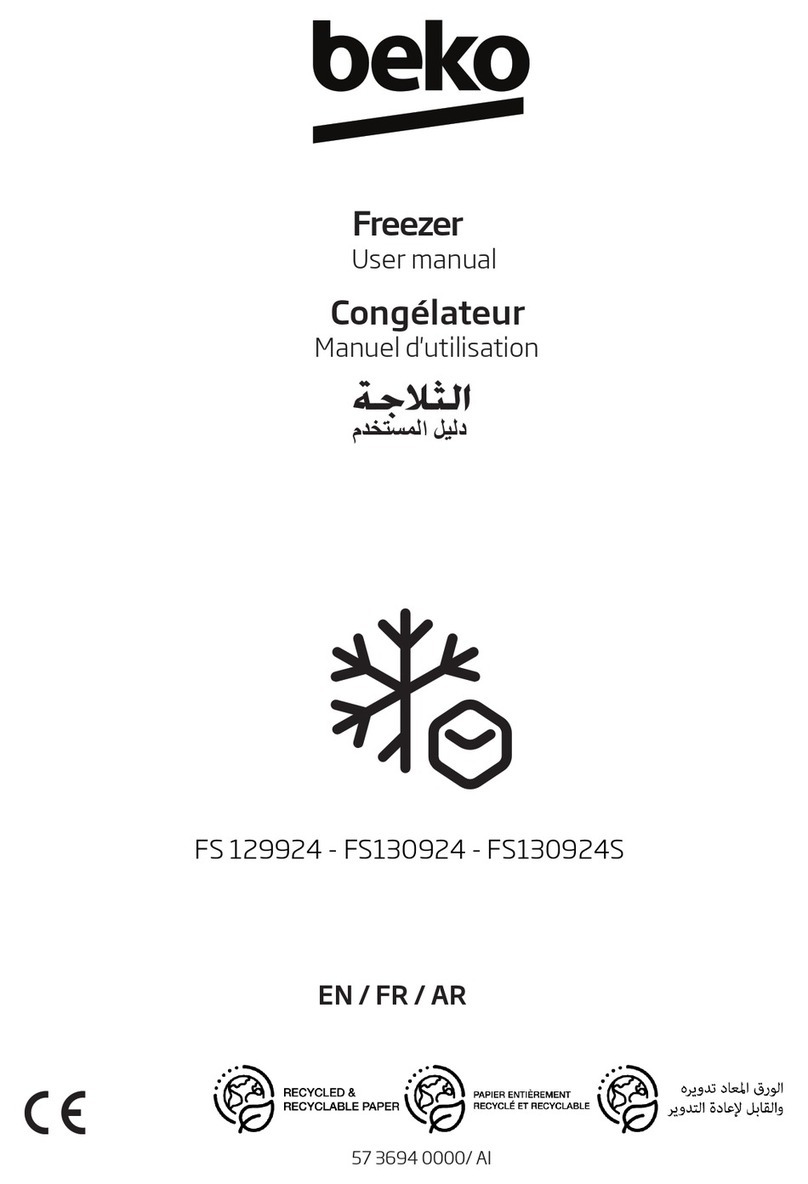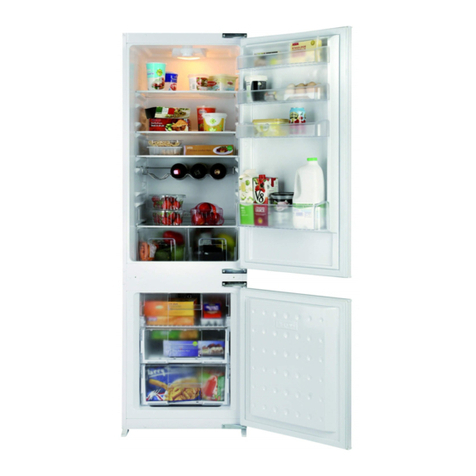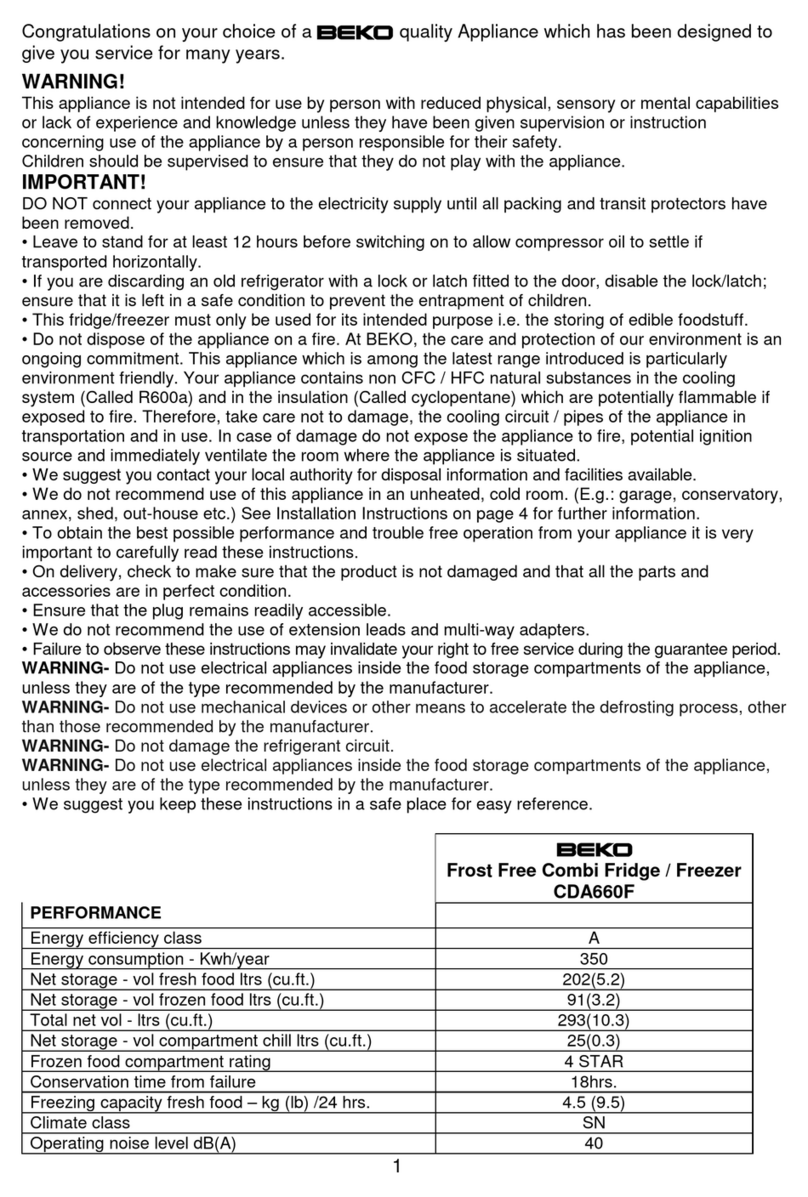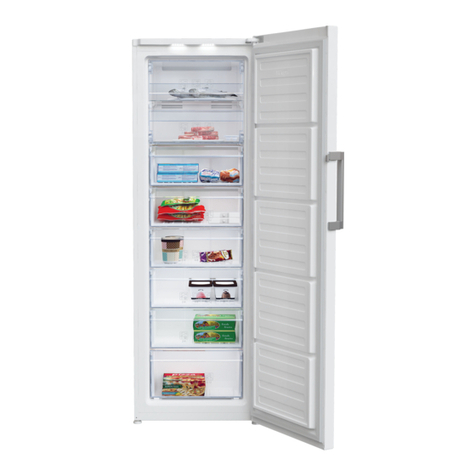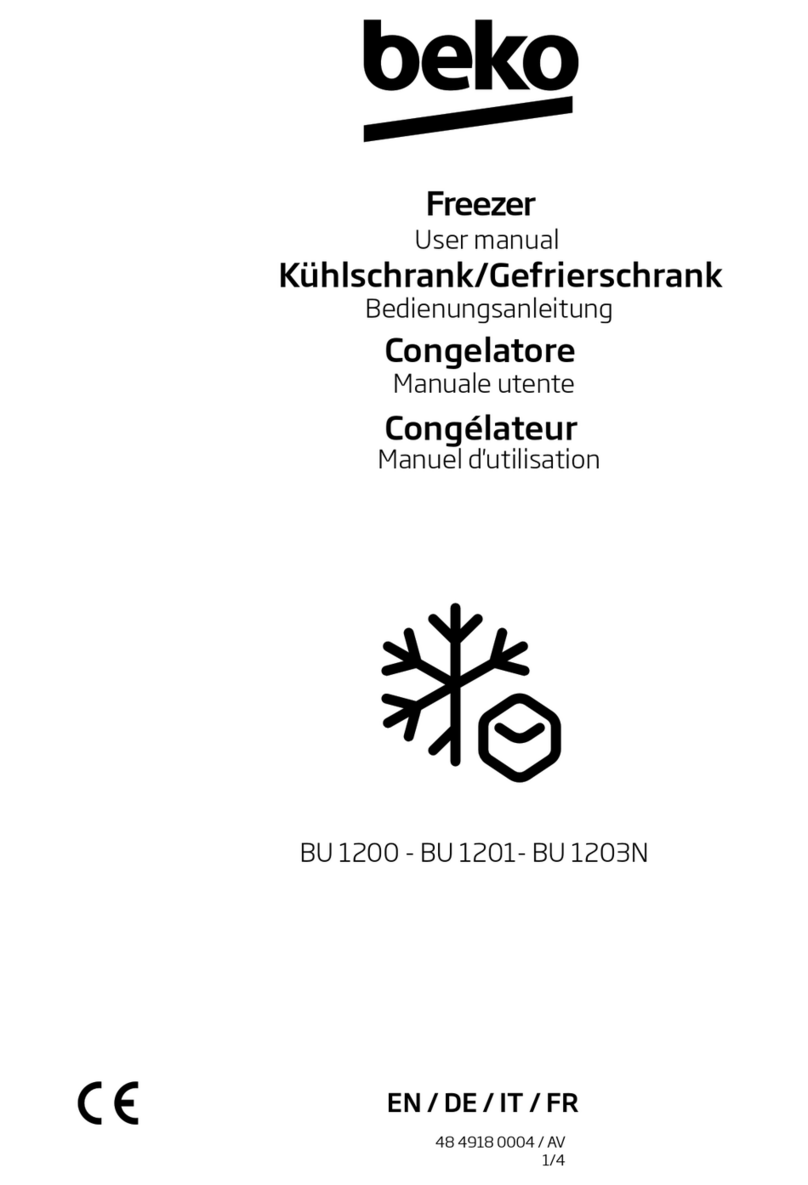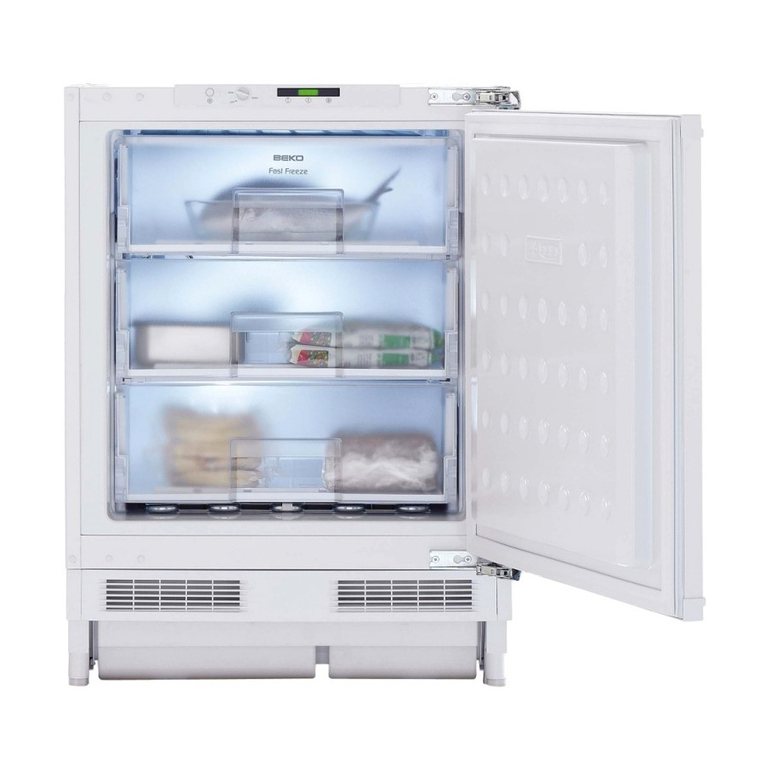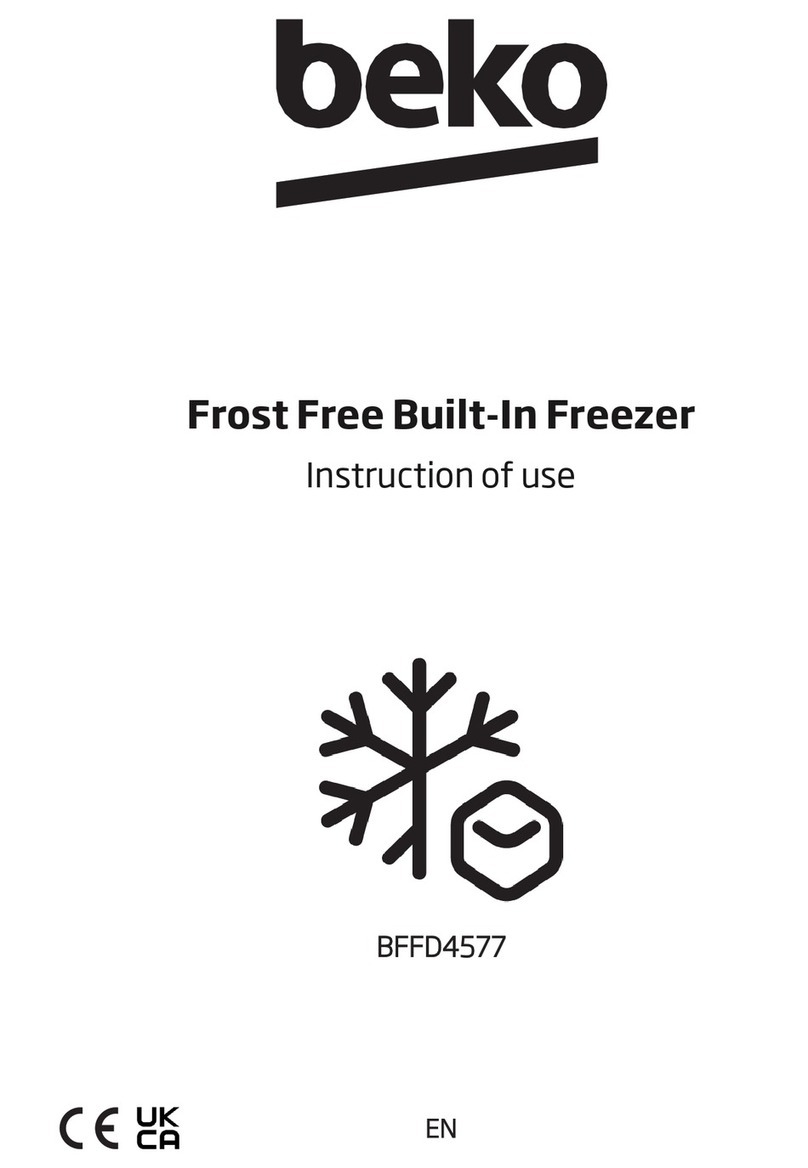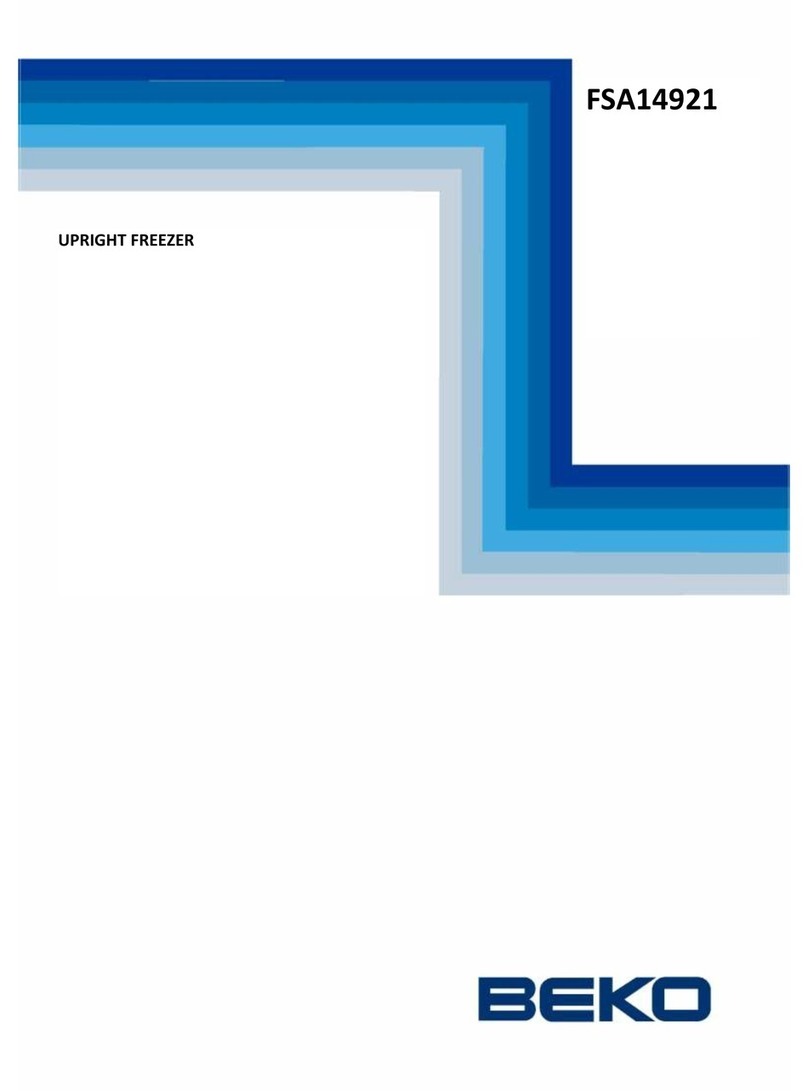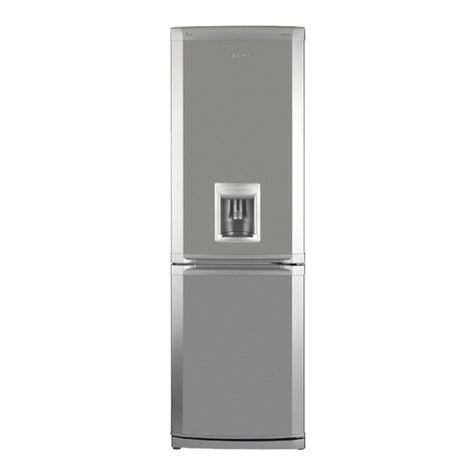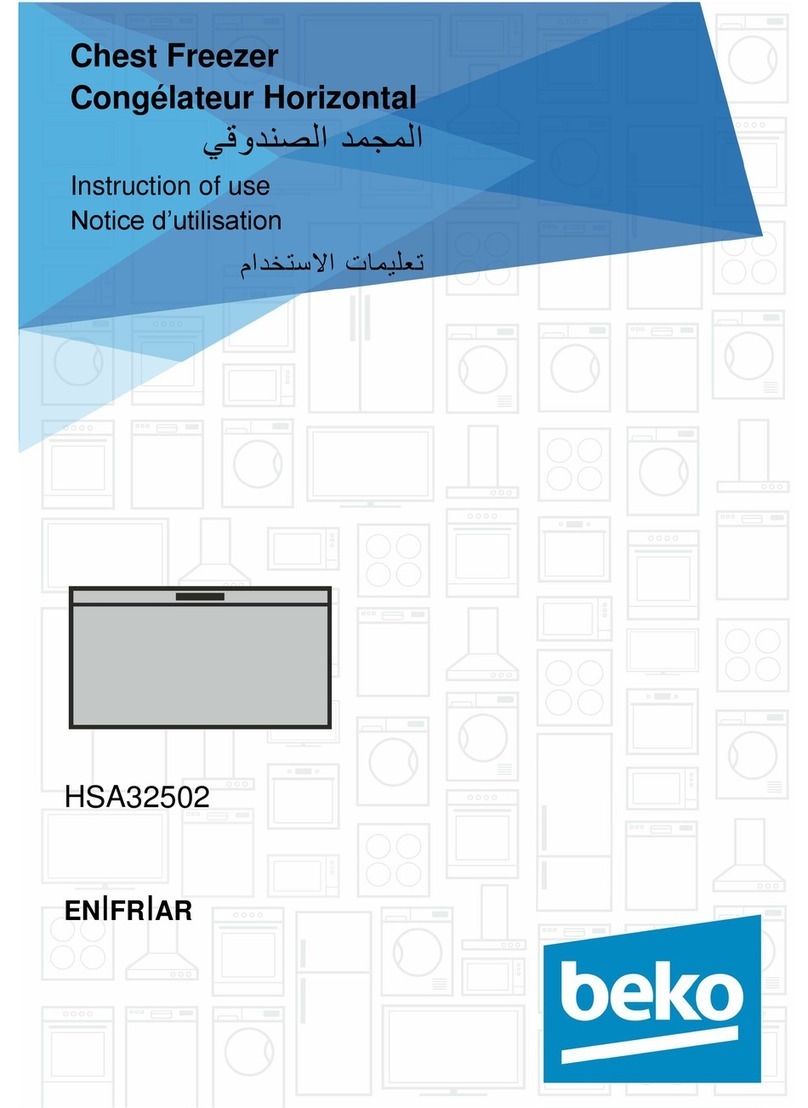
5 / 25 EN
Refrigerator/User Manual
Safety and environment instructions
• Do not use steam or steamed
cleaning materials for cleaning
the refrigerator and melting the
ice inside. Steam may contact the
electrified areas and cause short
circuit or electric shock!
• Do not wash the product by spraying
or pouring water on it! Danger of
electric shock!
• In case of malfunction, do not use
the product, as it may cause electric
shock. Contact the authorised service
before doing anything.
• Plug the product into an earthed
socket. Earthing must be done by a
qualified electrician.
• If the product has LED type lighting,
contact the authorised service for
replacing or in case of any problem.
• Do not touch frozen food with wet
hands! It may adhere to your hands!
• Do not place liquids in bottles and
cans into the freezer compartment.
They may explode.
• Place liquids in upright position after
tightly closing the lid.
• Do not spray flammable substances
near the product, as it may burn or
explode.
• Do not keep flammable materials and
products with flammable gas (sprays,
etc.) in the refrigerator.
• Do not place containers holding
liquids on top of the product.
Splashing water on an electrified part
may cause electric shock and risk of
fire.
• Exposing the product to rain, snow,
sunlight and wind will cause electrical
danger. When relocating the product,
do not pull by holding the door
handle. The handle may come off.
• Take care to avoid trapping any part
of your hands or body in any of the
moving parts inside the product.
• Do not step or lean on the door,
drawers and similar parts of the
refrigerator. This will cause the
product to fall down and cause
damage to the parts.
• Take care not to trap the power cable.
• When positioning the appliance,
ensure the supply cord is not trapped
or damaged.
• Do not locate multiple portable
socket-outlets or portable power
supplies at the rear of the appliance.
• Children aged from 3 to 8 years
are allowed to load and unload
refrigerating appliances.
• To avoid contamination of food,
please respect the following
instructions:
• Opening the door for long periods can
cause a significant increase of the
temperature in the
• compartments of the appliance.
• Clean regularly surfaces that can
come in contact with food and
accessible drainage systems.
• Clean water tanks if they have not
been used for 48 h; flush the water
system connected to a water
• supply if water has not been drawn
for 5 days.
